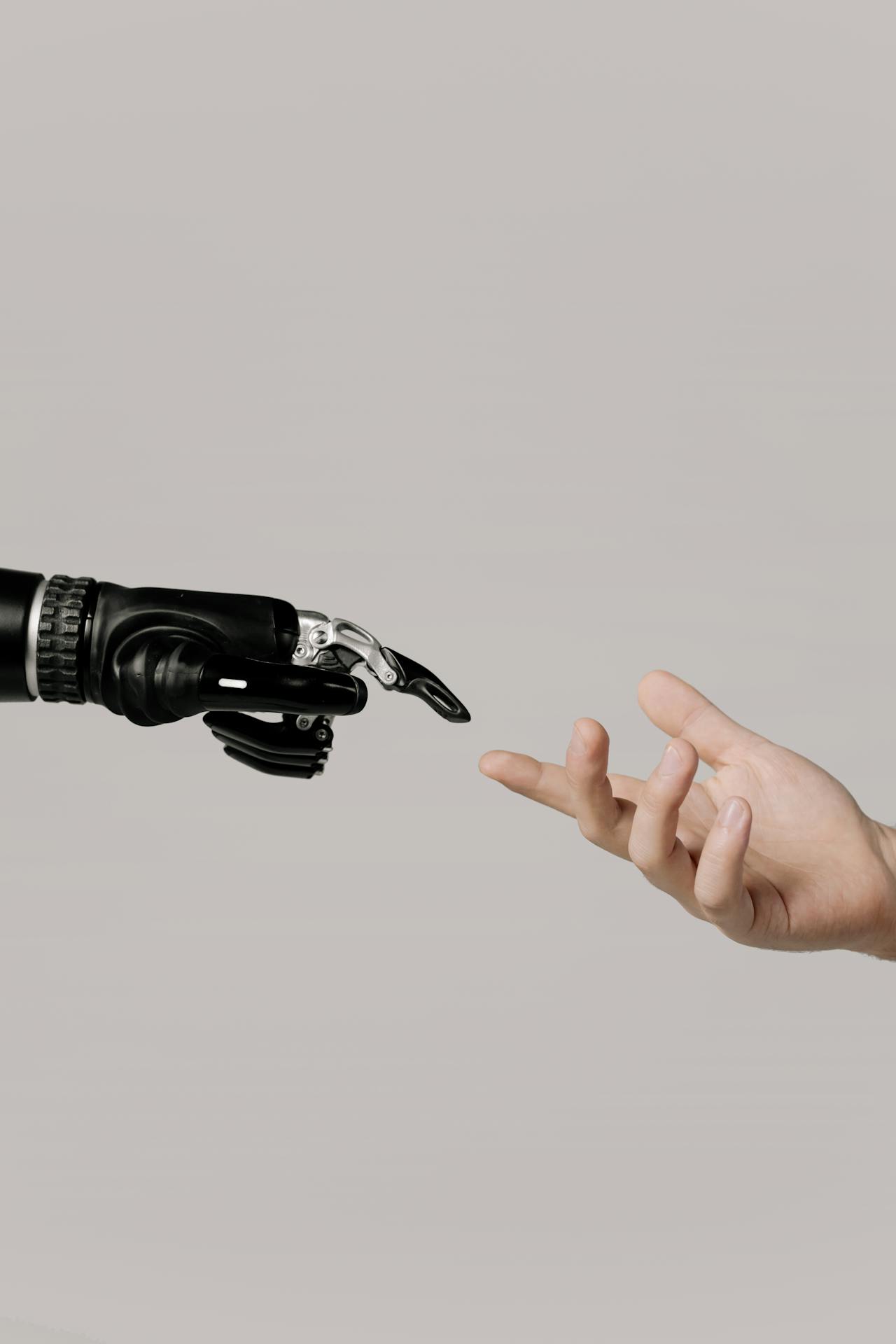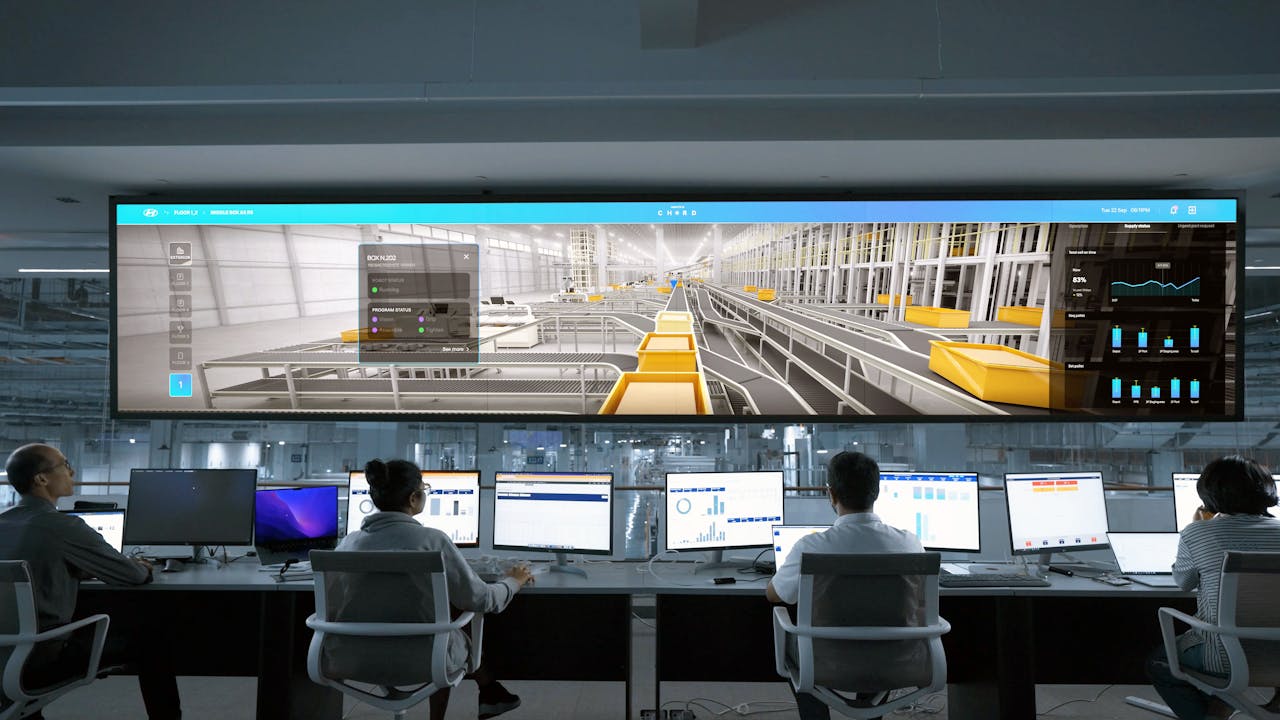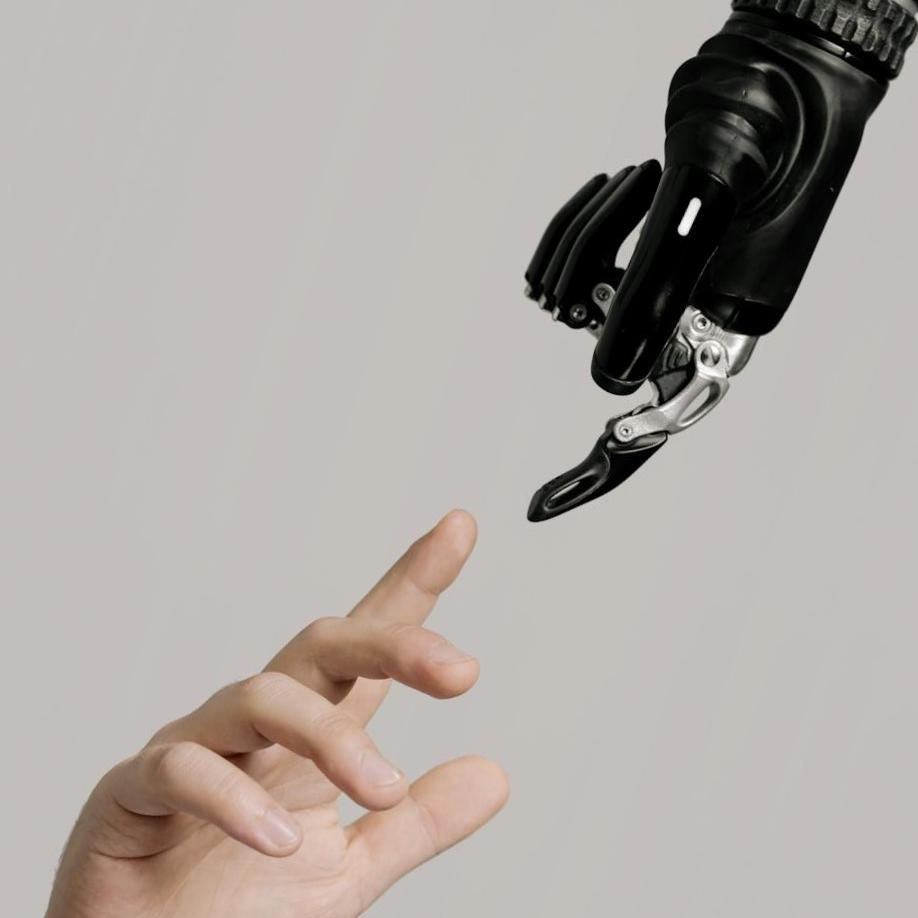Artificial Intelligence and Robotic Process Automation: The Future of Business Efficiency?
In today's rapidly evolving digital landscape, Artificial Intelligence (AI) and Robotic Process Automation (RPA) are two key technologies that are reshaping industries worldwide. Both AI and RPA play distinct roles in automating repetitive tasks, improving efficiency, and driving innovation across multiple sectors.
AI refers to machines that can simulate human intelligence, such as learning, reasoning, and problem-solving. RPA, on the other hand, focuses on automating rule-based, routine tasks that previously required human intervention. While RPA mimics human actions, AI brings cognitive capabilities into the equation, allowing for more advanced decision-making processes.
When combined, these technologies can transform industries by automating both simple and complex tasks. Companies benefit from increased efficiency, cost reduction, and scalability. However, there are challenges, such as integration complexity and the need for more skilled professionals to maintain these systems.
So what are the benefits of combining AI and RPA?
Benefits of combining AI and RPA:
- Faster task completion with minimal human involvement
- Improved accuracy by reducing manual errors
- Ability to handle both structured and unstructured data
- Enhanced decision-making through AI-driven insights
Challenges:
- Complex integration processes
- Dependence on changes to legacy systems
- Unreliability and instability of RPA

What is Robotic Process Automation (RPA)?
Robotic Process Automation (RPA) is a technology that uses software robots or "bots" to perform repetitive, rule-based tasks typically carried out by humans. The primary goal of RPA is to automate mundane and manual tasks that consume time and resources, freeing up employees to focus on more strategic activities.
At its core, RPA mimics human actions by interacting with applications in the same way a person would. These bots are programmed to follow pre-defined rules, such as logging into systems, entering data, and processing transactions. Unlike AI, which learns and adapts, RPA follows strict instructions to ensure consistent results.
History of RPA in Business Processes
RPA first emerged in the early 2000s as businesses sought ways to streamline operations and improve efficiency. Early implementations were limited to basic tasks like automating data entry, but as the technology matured, its use cases expanded across industries. The rise of digital transformation pushed businesses to adopt RPA as part of their automation strategy, especially in sectors like finance, healthcare, and retail.
Why Businesses Adopted RPA
Businesses quickly recognized the advantages of RPA:
- Speed: Bots can execute tasks much faster than humans, significantly reducing processing times.
- Efficiency: Tasks are completed with precision and consistency, minimizing errors.
- Cost Savings: By automating manual processes, companies reduce labor costs while boosting productivity.
Common Uses of RPA in Business
- Form Processing: Automating the extraction and input of data from forms.
- Data Entry: Repetitive data input across multiple platforms.
- Invoice Processing: Automating the review and approval of invoices.
- Customer Support: Handling routine inquiries through chatbots.

The Key Challenges of Robotic Process Automation
While Robotic Process Automation (RPA) has streamlined many business operations, it's not without its challenges. As businesses push for more automation, they often encounter roadblocks that highlight RPA's limitations.
Frequent Failure When Interfaces Change
One of the most frustrating aspects of RPA is its vulnerability to changes in the applications it interacts with. Since RPA mimics human interactions on a user interface (UI), even the smallest adjustment—like a button or field shift—can break the entire automation. This requires constant monitoring and reprogramming, making RPA more fragile than initially expected by business owners.
Inflexibility and Need for Human Intervention
Despite being labeled "automation," RPA often needs human oversight. The technology is rigid, meaning it can only perform tasks it's explicitly programmed for. If any variation occurs outside its defined parameters, the bot can't adapt or "think" its way through. This lack of flexibility increases the demand for human intervention to resolve issues or adjust the automation's programming. RPA is not like a digital virtual employee who can reason and analyze data.
Handling Structured vs. Unstructured Data
Another challenge is RPA's inability to handle unstructured data efficiently. While it's adept at processing structured data—like predefined forms or spreadsheets—unstructured data, such as emails, images, or free-form text, poses a significant hurdle. Since many businesses deal with unstructured data daily, RPA falls short in these areas, requiring additional solutions like AI to bridge the gap.
Limitations in Scalability and Deployment Issues
Scaling RPA across an entire organization can be tricky. Unlike API automation or more dynamic forms of automation, RPA lacks the robustness to scale seamlessly. Each process needs to be carefully adapted and customised for each system, increasing the time and cost of deployment. Moreover, as businesses grow, maintaining a large number of bots becomes increasingly difficult and expensive.

Introduction to Artificial Intelligence (AI) in Automation
Artificial Intelligence (AI) is rapidly transforming how businesses operate, especially in automation. Unlike traditional RPA, which follows predefined rules, AI brings a level of intelligence and adaptability that allows systems to learn, reason, and improve over time with the help of machine learning.
Overview of AI and Its Applications in Business Automation
At its core, AI in automation enables machines to make decisions, analyze data, and carry out tasks typically requiring human judgment. Businesses are using AI to automate more complex processes, moving beyond repetitive tasks like data entry to decision-making roles that involve interpreting data or understanding patterns. This has opened the door to new levels of efficiency, as AI can process information faster and more accurately than humans.
How AI Complements RPA in Automation Processes
When combined with RPA, AI adds much-needed flexibility to automation workflows. While RPA excels at handling structured, rule-based tasks, AI steps in where unstructured or variable data is involved. AI tools and systems include Autonomous AI agents, large language models (LLMs), digital virtual employees, and Generative Pre-trained Transformers (GPTs). Together, these technologies create a powerful duo: RPA manages repetitive tasks, while AI enhances decision-making, pattern recognition, and anomaly detection, allowing automation systems to handle more sophisticated business operations.
AI’s Ability to Handle Unstructured Data
One of the most significant benefits of incorporating AI into automation is its ability to process unstructured data. From emails to PDFs and images, AI can analyze this unorganized information and extract meaningful insights. This capability addresses one of RPA’s major shortcomings, ensuring that businesses can automate processes that rely on both structured and unstructured data sources.
Machine Learning’s Role in Improving Automation Systems
Machine learning, a subset of AI, is instrumental in refining automation systems. By analyzing past performance, machine learning algorithms can improve processes over time, making the system more efficient and accurate. This self-improving capability helps businesses streamline workflows without constant human intervention, as the AI learns and adapts with each interaction.

AI vs. RPA: What’s the Difference?
When discussing Artificial Intelligence (AI) and Robotic Process Automation (RPA), it’s essential to understand their differences. While both technologies are used to automate business processes, they operate in distinctly different ways and have varying capabilities.
Key Differences Between AI and RPA
RPA is rule-based and excels at automating repetitive, structured tasks. It follows a predefined script to mimic human actions, such as data entry, invoice processing, and form filling. In contrast, AI is dynamic and can handle more complex tasks requiring learning, reasoning, and decision-making. While RPA performs tasks according to specific rules, AI systems adapt to new information and improve over time.
Which Tasks Are Better Suited for AI vs. RPA?
For tasks involving highly structured data and predictable workflows, RPA is the ideal solution. Examples include invoice processing, updating customer records, or managing financial reports. On the other hand, AI is better suited for tasks that involve unstructured data or require analysis and decision-making, such as customer sentiment analysis, fraud detection, or personalized marketing recommendations.
Why Combining AI and RPA Creates More Efficient Processes
When businesses combine AI and RPA, they unlock a new level of automation. While RPA handles the repetitive, rule-based tasks, AI adds intelligence by processing and analyzing data, making decisions, and learning from each interaction. This combination allows businesses to automate both routine and complex processes, streamlining operations, and reducing the need for human intervention.
When to Use AI Instead of RPA in Business Process Automation
Businesses should opt for AI when dealing with tasks that require adaptation, pattern recognition, or handling unstructured data. For instance, in customer service, where understanding natural language is essential, AI can analyze customer inquiries and provide relevant responses. Meanwhile, RPA is better for handling repetitive, structured tasks that don’t require ongoing learning.
But there is a secret weapon only the insiders know.

The Insider Solution: How API Automation Solve RPA’s Limitations
Many businesses have been using RPA for the past decade, but only the true insiders know the existence of an automation solution that runs faster, better, and cheaper than RPA (a telltale sign of a business using this insider solution? Their companies are scaling at lightning speed without the concurrent payroll scaling). What is this insider solution?
As businesses seek more efficient automation tools, automations using Application Programming Interfaces (APIs) are the powerful alternative to RPA. While Robotic Process Automation is effective at handling repetitive tasks, it often fails when minor changes occur in the system's interface. This is where APIs step in to solve many of RPA’s shortcomings. So, what is API automation?
Introduction to Application Programming Interfaces (APIs)
APIs act as bridges between software applications, allowing them to communicate and share data seamlessly. Instead of mimicking user actions, as RPA does, APIs enable systems to exchange information directly, making them more reliable and flexible for business automation.
How APIs Allow Systems to Communicate Without Relying on Interfaces
One of the key limitations of RPA is its reliance on user interfaces to perform tasks. If a software interface changes, even slightly, the RPA process often breaks down, requiring manual intervention to fix the automation.
In contrast, APIs interact directly with the backend systems, bypassing the user interface altogether. This reduces the risk of failure due to interface changes, making API-driven automation more robust and adaptable. This makes API automation a true favourite manner of automation for many corporate insiders.
But what about unstructured data?
APIs and Unstructured Data Processing
Handling unstructured data—data that doesn’t fit neatly into predefined formats—is a challenge for many automation tools. However, APIs are designed to manage both structured and unstructured data, offering businesses greater flexibility in automating complex processes. For example, using API automation, businesses can automate tasks like extracting information from emails, analyzing customer feedback, or integrating machine learning algorithms to interpret large sets of raw data.
Benefits of Using APIs for Automation
APIs offer several advantages over traditional RPA, including:
Scalability
- APIs can handle larger, more complex processes and integrate easily across various platforms.
Reliability
- Since APIs work directly with backend systems, they are less prone to failures caused by minor interface changes.
Flexibility
- APIs can manage a variety of data types, including unstructured data, which RPA struggles with.
Cost Efficiency
- By reducing the need for manual intervention, API-driven automation cuts operational costs.
WunderWaffen’s API-Driven Automation for Minimal Human Intervention
At WunderWaffen, we leverage the power of APIs to create seamless, fully automated workflows. Our API-driven automation connects apps and software systems without the need for human input, ensuring that tasks are completed more efficiently and with fewer errors. By focusing on API integration, WunderWaffen helps businesses minimize disruptions and boost productivity, even in the most complex environments.
But what exactly is unstructured data for those who do not understand?

The Role of AI in Processing Unstructured Data
As businesses generate and collect data from multiple sources, they often encounter unstructured data. This is data that doesn’t conform to traditional formats like spreadsheets or databases. It includes emails, social media posts, video content, and even handwritten notes. Processing unstructured data can be a nightmare for most automation tools, as they’re designed to work with clearly defined data structures.
What Is Unstructured Data and Why It’s Hard to Process
Unlike structured data that fits neatly into rows and columns, unstructured data is raw, disorganized, and doesn’t follow a predefined format. This makes it difficult for traditional systems to interpret, analyze, or extract meaningful insights. Businesses often struggle to tap into the value stored in unstructured data without the right tools.
AI’s Capability in Interpreting and Analyzing Unstructured Data
This is where Artificial Intelligence shines. Unlike legacy systems, AI can learn from patterns in the data itself, enabling it to interpret and analyze unstructured data with incredible accuracy. Using natural language processing (NLP), machine learning algorithms, and advanced analytics, AI can extract insights from sources such as customer emails, product reviews, and social media discussions. Combined with API automation, AI will interpret and analyze unstructured data better than RPA.
Use Cases for AI Handling Unstructured Data in Business Process Automation
Businesses are already using AI to tackle unstructured data in various scenarios:
Customer Support
- AI systems analyze customer emails and support tickets, identifying trends and prioritizing issues.
Market Research
- By analyzing social media posts, AI uncovers sentiment and customer preferences.
Compliance
- Automated document processing powered by AI helps businesses handle regulatory requirements.
By leveraging AI for unstructured data, companies can unlock valuable insights and improve decision-making processes, areas where manual processing would have fallen short.
So what if you still wish to combine both RPA and AI?

Benefits of Combining AI and RPA for Business Automation
Still want to use RPA? The synergy of Artificial Intelligence and Robotic Process Automation opens up new possibilities for businesses looking to scale their automation efforts. By integrating these two technologies, businesses can go beyond simple, rule-based tasks and achieve faster, more intelligent automation. If you are still a traditional business owner who insists on using RPA, here are the benefits:
Faster Automation Processes with AI-Powered RPA
One of the most significant advantages of combining AI and RPA is speed. While RPA excels at performing repetitive tasks, AI enables systems to make real-time decisions by analyzing complex data. This dynamic duo enhances the overall workflow automation process, significantly reducing the time needed to complete intricate tasks that involve both structured and unstructured data.
Handling Complex Tasks That Require Human-Like Decision-Making
AI brings decision-making capabilities that traditional RPA lacks. When automation processes require deeper analysis, pattern recognition, or decisions based on nuanced data, AI steps in. For example, instead of just processing invoices, an AI-augmented RPA system can identify anomalies, flagging them for review. This human-like reasoning allows businesses to automate more complex workflows.
Improving Accuracy and Reducing Errors with AI-Driven Automation
Traditional RPA can sometimes struggle with inconsistencies, particularly when data formats or workflows change. With AI in the mix, automation becomes more resilient and adaptive. Machine learning algorithms can detect patterns and adjust processes on the fly, leading to fewer errors and higher accuracy. This means less manual oversight, and businesses can confidently rely on automated systems for critical operations.
But why be the outsider if you can be an INSIDER?
WunderWaffen’s Use of AI and API Automation to Automate Workflows
At WunderWaffen, we go one step further - we understand the power of combining AI and API automation to automate complex business workflows. We know the answers to questions you‘ve always wanted an insider to answer.
You can attain the same results above without RPA, but with API automation and AI, and achieve even more.
RPA may still be the preferred choice of automation for many business owners, but API automation promises a smoother journey to 1000x scaling of business performance (and that is why insiders love it).
Our API automation solutions integrate seamlessly into existing processes, integrating existing apps and software that a company uses, and thus enhances both efficiency and precision. Our clients rarely need to change apps and software subscriptions. By linking apps and data streams through APIs in your business, WunderWaffen creates systems that need minimal human intervention while ensuring accurate, error-free outcomes, unlike RPA.
Long-Term Cost Savings with AI and RPA Systems
Another key benefit of using AI-augmented API automation is the potential for long-term cost savings. As automation systems become more intelligent, businesses can reduce reliance on human labor for routine tasks, freeing up resources for higher-value activities. Additionally, the reduction in errors and faster processing times contribute to lower operational costs over time.

Case Studies: How Businesses Are Using AI and API Automation Together
To truly understand the power of combining Artificial Intelligence and API Automation, we need to look at how real businesses have successfully integrated these technologies. From cutting costs to reducing human error, the benefits are transformative.
Case Study of WunderWaffen and API-Based Automation Success
At WunderWaffen, we’ve successfully deployed AI and RPA solutions for various industries, particularly by leveraging API-driven automation. In one instance, an AI company struggling with data processing issues reached out to us. By implementing a system that used AI and API to automate its event management, sales, and payments / document management workflows, we helped the client automate their lead management and sales reporting. This minimized errors, reduced hiring costs, and freed the C-suite to focus on more critical, strategic initiatives.
Future Trends in Artificial Intelligence and Robotic Process Automation and API Automation?
The future of Artificial Intelligence and Robotic Process Automation and API automation holds exciting possibilities for businesses looking to enhance their automation capabilities. As technology continues to evolve, the integration of AI and RPA will not only become more seamless but also more impactful across industries. However, API automation will continue to increase its adoption rates.
In the coming years, we can expect AI-driven RPA to take on more complex tasks that require cognitive decision-making. Machine learning will enable RPA to adapt to changes in real time, increasing automation’s flexibility and resilience. Businesses will no longer rely solely on rule-based automation but will embrace AI to handle unstructured data and unpredictable workflows. Companies will include API automation in their internal business processes to make up for the shortfalls of RPA automation, which costs more, breaks down often, and results in reduced productivity.
How Advancements in AI Will Improve RPA Systems
As AI technologies advance, the gap between manual interventions and fully autonomous processes will shrink. We’ll see AI and RPA systems that not only execute tasks but also learn from data patterns, optimizing themselves over time. AI will improve RPA's ability to process unstructured data, leading to more efficient and reliable automation.
The Role of APIs in the Future of Automation
API automation will become more popular across all industries, playing a crucial role in linking disparate systems, enabling better communication between AI and RPA solutions, and will overtake RPA as the preferred choice of automation. The future of automation will revolve around API-driven environments where minimal human intervention is needed, ensuring faster and more accurate execution of tasks.
Industries Most Likely to Benefit from AI and RPA and API Automation
Industries such as healthcare, finance, and manufacturing are poised to reap the most benefits from AI and RPA and API integrations. These sectors deal with vast amounts of both structured and unstructured data, making them prime candidates for automation-driven efficiency and error reduction.

FAQs: Artificial Intelligence and Robotic Process Automation and Application Programming Interfaces (API)
As the integration of Artificial Intelligence (AI) and Robotic Process Automation (RPA) and Application Programming Interfaces (API) continues to evolve, questions arise about their functionalities, benefits, and future. Here are some frequently asked questions to clarify these technologies.
Q: What is the main difference between RPA and AI?
- RPA is primarily designed to automate repetitive, rule-based tasks by mimicking human actions, such as data entry and form processing. In contrast, AI encompasses a broader range of technologies that enable machines to learn, reason, and make decisions based on data analysis. While RPA focuses on process automation, AI adds cognitive capabilities that enhance decision-making and problem-solving.
Q: Can RPA handle unstructured data?
- Traditionally, RPA struggles with unstructured data as it is designed to work with structured inputs. However, when combined with AI, RPA can leverage machine learning algorithms to interpret and process unstructured data, making it more versatile and effective in complex scenarios. However, API automation can handle unstructured data very well, if not better.
Q: Why are businesses moving from RPA to API automation?
- Businesses are transitioning from RPA to API automation due to RPA's limitations in scalability and adaptability. APIs facilitate seamless integration between different systems, allowing for more efficient communication and data sharing. By leveraging API-driven automation, companies can achieve minimal human intervention, enhance flexibility, and reduce dependency on specific user interfaces.
Q: How can AI improve business process automation with API automation?
- AI enhances business process automation by enabling systems to analyze vast amounts of data, recognize patterns, and make informed decisions. This results in improved accuracy, reduced errors, and the ability to handle complex tasks that require human-like judgment. The synergy between AI and API automation allows for intelligent automation that adapts to changing business environments.
Q: How does WunderWaffen use APIs to improve automation?
- WunderWaffen employs API integration to create robust automation solutions that link various applications and systems. This approach minimizes human intervention, enhances data flow between platforms, and streamlines workflows. API automation is faster, cheaper, and more reliable than RPA. By using API automation, WunderWaffen ensures that businesses can automate processes efficiently while maintaining flexibility and scalability.
Conclusion
In today’s rapidly evolving business landscape, the combination of Artificial Intelligence (AI) and Robotic Process Automation (RPA) presents a transformative opportunity. By merging these technologies, organizations can unlock a multitude of benefits, including enhanced efficiency, improved accuracy, and the ability to tackle complex tasks that require human-like decision-making.
However, the limitations of RPA, particularly in handling unstructured data and scaling, highlight the necessity of API automation. By leveraging API automation, businesses can bridge these gaps, facilitating seamless communication between systems and allowing for the integration of intelligent solutions.
Have a legacy system? The future of automation lies in the harmonious collaboration of AI, RPA, and APIs, working together to create streamlined, efficient processes that can adapt to the ever-changing demands of the market.
Now is the time for businesses to explore AI-augmented automation solutions.
Join the Waiting List to engage WunderWaffen and leverage the full potential of these innovative technologies and stay ahead in your industry.
Artificial Intelligence and Robotic Process Automation…vs the Secret Automation System Only Insiders Know About (You Don’t)